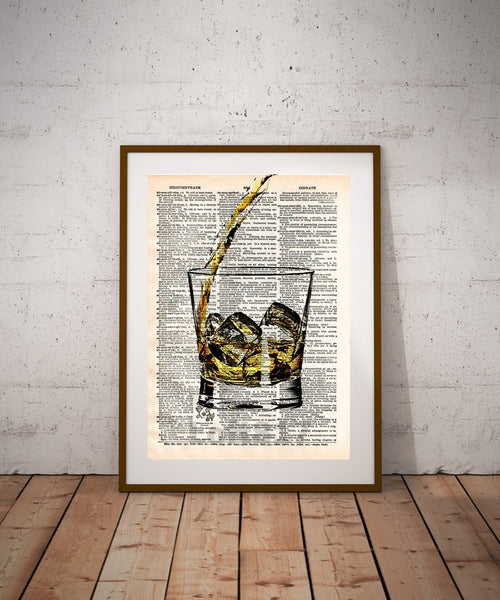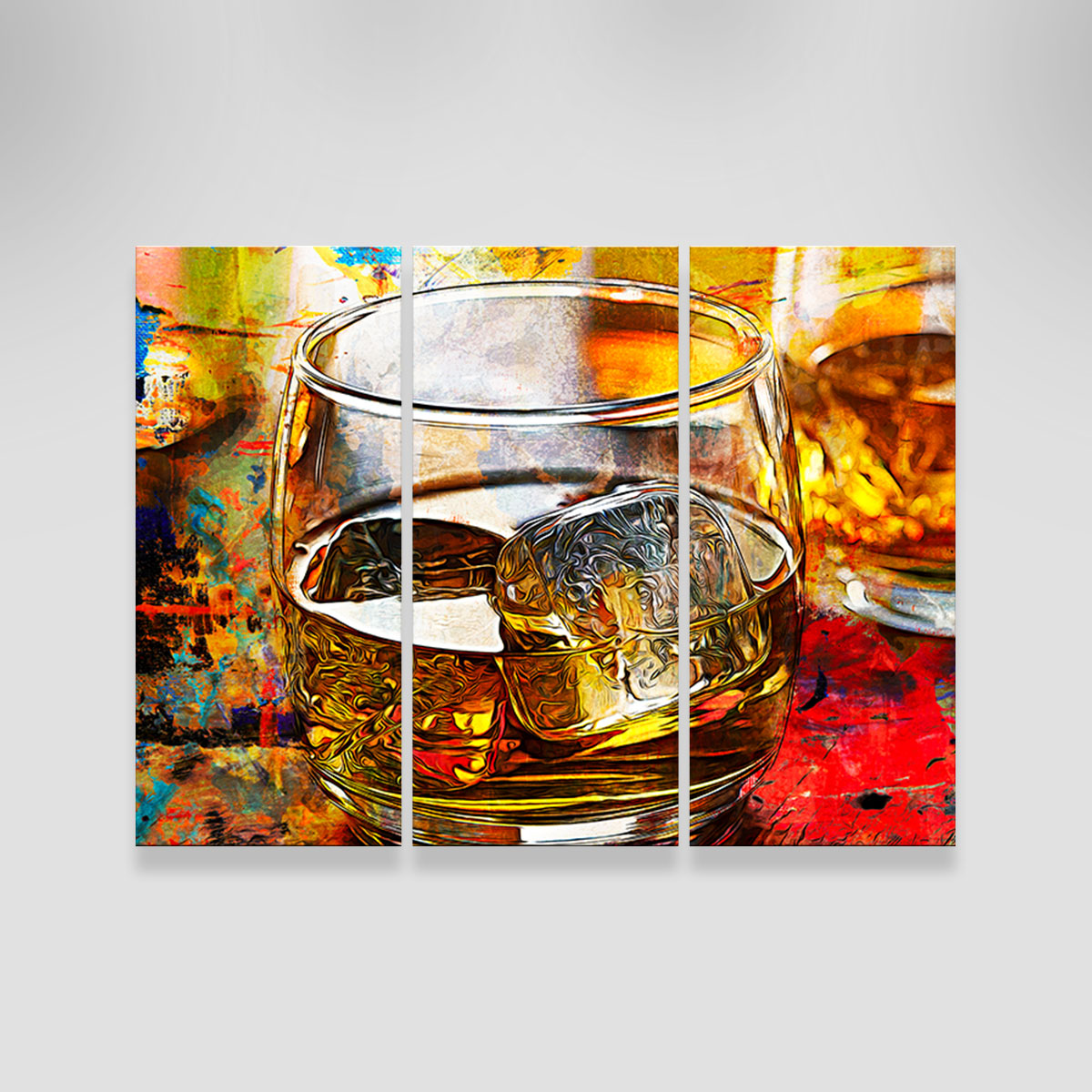The Importance of Whiskey Art in Celebrating Heritage and Workmanship in the Beverage Industry
The detailed connection in between scotch art and the celebration of heritage and workmanship within the beverage sector can not be overstated. Through attentively designed containers and labels, bourbon brands envelop their historical origins and the artisanal skills that specify their production approaches.
The Historical Origins of Whiskey
At the heart of bourbon's allure exists a rich tapestry of historic origins that trace back to old worlds. The beginnings of whiskey can be linked to the purification practices of the Sumerians and Babylonians around 2000 BCE, where very early forms of fermented grain beverages started to emerge. It was in the Middle Ages that the art of purification advanced considerably, especially in Ireland and Scotland, leading to the production of whiskey as we understand it today.
The term "bourbon" itself stems from the Gaelic word "uisce beatha," implying "water of life." This expression emphasizes the cultural importance of scotch in Celtic cultures, where it was often associated with rituals, events, and public bonding. By the 15th century, purification became a recognized craft within monastic neighborhoods, leading the means for the facility of lawful distilleries.
As profession routes expanded, whiskey's popularity grew, transcending regional limits and catching the rate of interest of aficionados worldwide. Realism Art. This historic trip mirrors not just the workmanship behind bourbon manufacturing yet additionally its indispensable duty in social and social contexts, noting it as a substantial drink throughout background
Artistic Expression in Branding
Scotch branding stands as a compelling junction of artistry and commerce, where aesthetic identification plays a vital duty in shaping consumer understanding. The visual appeals of scotch tags, packaging, and advertising and marketing products reflect not just the brand name's story however likewise its core worths and heritage. Through imaginative expression, distilleries communicate a story that resonates with customers, evoking feelings and triggering links.
The use of color, typography, and images in branding serves to set apart items in a saturated market. Typical themes might evoke a feeling of authenticity and workmanship, while modern layouts can represent technology and forward-thinking. This tactical imaginative direction boosts brand recognition and commitment, allowing customers to forge an individual partnership with the scotch they pick.
Furthermore, creative expression in branding often offers as a party of regional heritage. Distilleries often include local signs or historic references into their layouts, creating a sense of location that welcomes consumers to take part in a more comprehensive social experience. Ultimately, the creativity behind bourbon branding not just enhances visual charm yet additionally enriches the general story of the brand name, cultivating a deeper gratitude for the craftsmanship and heritage ingrained in each container.
Workmanship in Container Layout
The artistry apparent in scotch branding prolongs past aesthetic identification to incorporate the workmanship associated with bottle design. Each bottle acts as a vessel not just for the spirit within, but also for the story it outlines its high quality, custom, and origin. The design process requires meticulous attention to information, as components such as shape, closure, and material add dramatically to the total understanding of the whiskey.
Craftsmanship in bottle layout entails choosing top notch glass that can improve the whiskey's shade and quality, while likewise offering a tactile experience for the customer. The silhouette of the bottle have to be both useful and visually appealing, frequently reflecting the heritage of the brand name. Numerous distilleries go with one-of-a-kind shapes or embossed logo designs that evoke a feeling of authenticity and background.
Additionally, the label layout and typography play a vital role in connecting the brand's story. Limited Edition. A well-crafted bottle not just captivates the customer's eye but additionally strengthens the brand name's commitment to top quality and custom. By doing this, the craftsmanship of container style comes to be an important facet of the scotch experience, combining artistry with an extensive respect for heritage
Cultural Value of Scotch Art
Commemorating tradition and workmanship, the social importance of bourbon art transcends simple aesthetics, intertwining with the social and historic narratives of the areas from which it comes from. Each container acts as a canvas, portraying the one-of-a-kind stories, folklore, and practices that have actually shaped regional have a peek at this site whiskey-making techniques. The intricate styles often reflect the heritage of the distillers, integrating icons and motifs that resonate with the culture and worths of their areas.

In addition, bourbon art plays an important duty in communal celebrations and celebrations, working as a substantial link in between people and their shared experiences. By appreciating the virtuosity in whiskey packaging, customers cultivate a deeper understanding and regard for the craft, ultimately enhancing their satisfaction of the beverage itself.
Modern Trends in Scotch Discussion
In the last few years, the presentation of scotch has actually evolved to show modern preferences and trends while still honoring typical craftsmanship - Whiskey Art. Distilleries are progressively concentrating on aesthetic elements that improve the general alcohol consumption experience, bridging the gap between heritage and modernity
Ingenious container layouts have actually emerged, commonly integrating lasting materials and creative tags that tell compelling stories. Numerous brand names now team up with local artists, infusing their products with distinct visual expressions that reverberate with consumers. In addition, limited-edition releases are frequently packaged in collectible containers, including worth and charm for aficionados.

Conclusion
To conclude, bourbon art offers as a vital channel for revealing the heritage and workmanship inherent in the beverage market. With detailed branding, innovative bottle designs, and culturally considerable creative components, bourbon brand names effectively honor their traditions and link with consumers. This creative narrative not only raises the recognition of bourbon yet additionally enhances area identification and satisfaction amongst manufacturers. Inevitably, bourbon art plays an essential role in preserving and commemorating the abundant social tapestry of whiskey-making.


Craftsmanship in container layout includes Homepage selecting top quality glass that can enhance the bourbon's color and clarity, while additionally giving a responsive experience for the consumer. In this means, the workmanship of bottle layout becomes a vital facet of the scotch experience, merging virtuosity with a Web Site profound regard for heritage.
In final thought, whiskey art offers as an important conduit for sharing the heritage and craftsmanship inherent in the drink industry.
Comments on “Limited Edition Bourbon Art: Why Collectors Are Flocking to One-of-a-kind Finds”